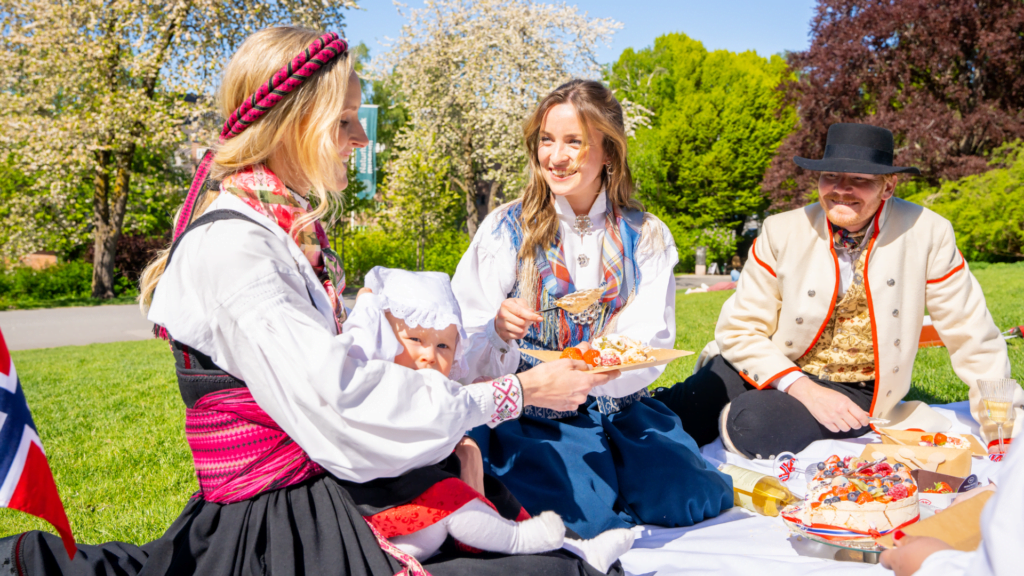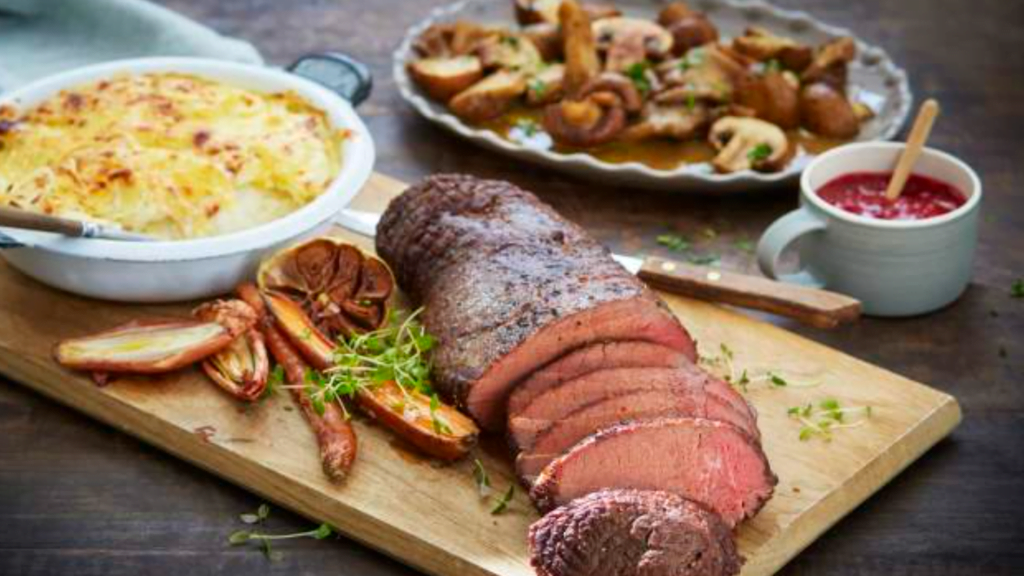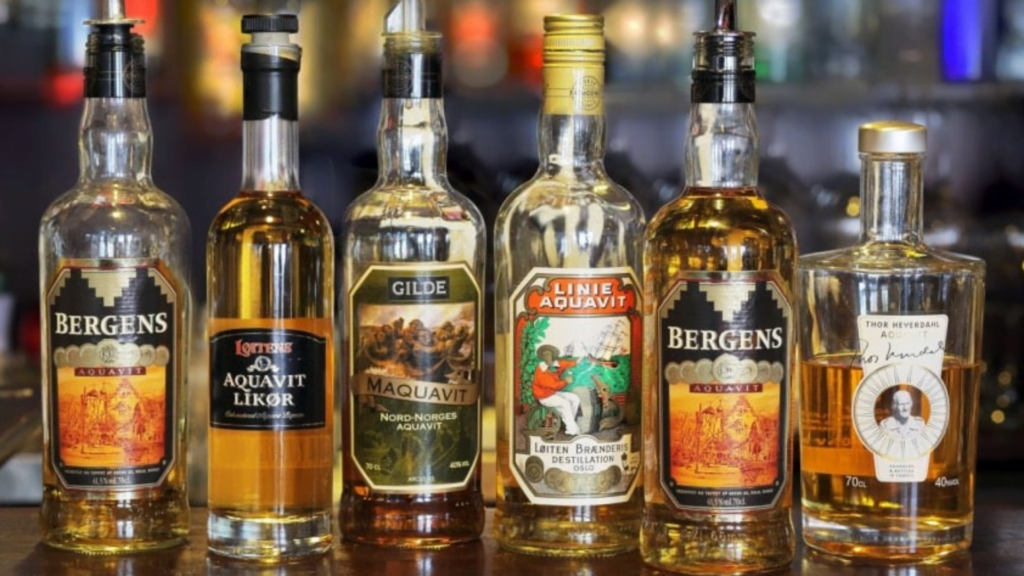Norway Culture and Traditions People from different regions have adopted their culture since ancient times. The significant role in forming national traditions is a result. From the wondrous splendor of Norway’s fjords to the deep-rooted history of folklore and vibrant cultures, this country will take you to a new world where the stories in legends intertwine with the festivals celebrated annually.
This blog post explores Norway’s cultural components, from traditions, rituals, norms, and beliefs integral to the Scandinavian nation. From the original Viking Legacy to the modern-day events that publicly demonstrate the country’s grit and the unity of its people, we will discuss the unique characteristics that make Norway enjoyable.
Take a journey with us while discovering the fascinating traditions that have survived the test of time and are continuing to evolve dynamically in the present, which is marked by a fast pace. Forgetting the fundamental essence of Norway’s cultural heritage will never be a choice or an option. The people’s and society’s turnout on these legacies can be reviewed to be profound. Here comes the point where you will dive into a world where each rite has its own story to tell, and for every festive occasion stands the proof of the eternity of Norway.
Norwegian Culture Overview
Norway’s People’s Heritage is a lace embroidered with strands of tradition, music, and festivals that have survived with time and are passed on through the generations by proud and reverent fusion.
Cultural Heritage and Traditions
Exploring the Norwegian cultural scene starts to reveal a multifaceted and complex interweaving of traditional culture, folk music wafting through different valleys, and joyous celebrations marking significant events in Norwegian life. Norway’s culture is rich with traditions like unique dress and festive celebrations on Constitution Day, which show deep patriotism.
Viking Age Influence
The murmurs of the formidable Viking warriors are still present in the fabric of Norway’s society, and the testimony has left it with a unique set of values and traditions. The Norsemen of the Vikings era shaped the mentality of the coastal community of what is nowadays Norway, and their art and skills are pretty visible in old stave churches with their embroidered wooden carvings. The Viking Age, which still mesmerizes imaginations, has become one of the symbols of the exploration and struggle spirit, which helps mid-Norwegians remain resolute.
Sami Culture and Influence
You go north of Norway and find the mind-blowing world of the Sami people, an indigenous group with a special relationship with the land and the cycles it goes through. The Samis “traditional lifestyle, colorful ornamentation, and musicality add several brushstrokes to the image of a culture especially tied to nature. Sled dog breeding as the base of their traditional livelihood and the marked cultural contributions of the Sami add up to the richness of Norwegian cultural heritage diversity, which, in turn, reflects the adaptability and flexibility of the Sami.
Traditional Norwegian Celebrations

The Norwegian solid culture is vibrant with celebratory traditions from centuries past and has a special place for the indigenous population. Now, we will enter the core of Norwegian celebrations and dive into the traditions that are not unique to these festive gatherings but symbols of cultural identity.
Constitution Day (17th of May)
Constitution Day, or the 17th of May, is the main historical milestone in Norwegian political history and is integral to nation-building. It is a considerable national celebratory occasion when Norway celebrates the day she signed her Constitution on the 1814 note. Taking a stroll in the borough, you’ll see kids in bright parades waving flags and sporting bunds, a traditional garment. The Second of May celebrations confirm Norway’s national pride. They also represent the unity and freedom enjoyed by its people. Throughout the nation, communities, regardless of size or location, bring joyful parties, music speeches, or whatever festivities they customarily celebrate to commemorate the holiday. Whether it was known then or not, all these actions blended in, creating a link between the present and the past.
National Day and Special Occasions
The Norwegians have a distinct knack for celebrating national days together and other special days with brimming cheerfulness. Despite people’s differences, this day is mainly about togetherness, while families and friends share their joy in the festivity. One of the cultural customs is wearing a male Bunad, the Norwegian national costume. Each region has a unique style. With each celebration, mystique seems to fall over as the air is filled with the distinct scent of mom dishes such as fårikål (lamb and cabbage stew) and rømmegrøt (sour cream porridge), and you can suddenly get hungry just fixing your eyes on them. Additionally, Norwegian cuisine culture goes beyond just cooking; it celebrates culinary traditions at social events. The community’s efforts come together to honor various cultural occasions through food.
Norwegian culture weaves together celebrations, blending ancestors with the present through traditions and foods, fostering tolerance. It’s a vibrant, colorful scene. Every two-year event gives you a look at what Norway is like. It’s a great way to experience the best of both worlds.
Norwegian Cuisine and Delicacies

Norway’s cuisine shows the long cultural legacies and different historical styles over the past millennium. Traditional Norwegian cuisine blends various recipes that reflect Norwegians’ connection to their land and sea. It’s a mix of flavors that showcases their deep bond with nature. Norwegian dishes also tell a story of tradition. The iconic brown cheese and seafood masterpieces also have deep roots in Norwegian history.
Traditional Norwegian Food
There is an item called “brunost” (which means brown cheese) that is a must-have in any Norwegian kitchen. Whey turns deep caramel. The iconic sweet and savory cheese spreads nationwide, delighting taste buds. Also, regarding local Norwegian food, brown cheese has established itself as a well-known name; it is equally popular with shoreline treats. The long coast of Norway provides a home for many kinds of seafood, which are now essential in Norwegian cuisine. European traditional cuisine has various dishes, such as lutefisk (soaked in the lye of dried cod) and rakfisk (a hit among Norwegians by fermented trout).
Significance of Traditional Ingredients: The typical Norwegian cuisines have many foods that come from the farms and tiny businesses of fisheries. Norman’s cooking tradition highlights fresh fish, wild game, and sustainable ingredients that complement each other well. It showcases a variety of tastes and emphasizes sustainability. Norwegians prioritize their culinary legacy not only by retaining the traditional foods but also by maintaining the novel gastronomic specks.
National Drink and Culinary Traditions

Water of life, the name people of Scandinavia give to the drink aquavit, is the pride of Norwegians and their national beverage. It is a wonder-filled beverage with different herbs and spices, blending excellently with Norwegian cuisine. Trendy ingredients like spiced hot wine and Christmas brew are commonly served at special gatherings.
Cultural Importance: Norwegian culinary traditions initially showcase the country’s identity. Norwegians honor their ancestors by celebrating food and drinks. It’s a way to remember and appreciate their roots. Traditional Norwegian meals stem from ancestral culinary traditions that shape how and why Norwegians eat and connect. Moreover, these methods have been passed down for hundreds of years. Food and drink are essential to Norwegian culture and community, from National Day celebrations to special occasion meals. The community’s traditions and values deeply intertwine with them.
Modern Influences on Norwegian Culture
Norway blends ancient culture with modern forces for a flexible, innovative vibe. The country welcomes change and new ideas.
Contemporary Cultural Practices
Norway’s modern art, trending music, and overall cultural expression effectively merge tradition and modernity. The Norwegian art scene in Oslo is cutting-edge, while music venues in Bergen offer diverse festivals. The cultural scene is a vibrant mix of creativity and diversity. This mix of old and new celebrates the nation’s heritage while propelling it forward. Audiences are amazed by the country’s rapid evolution.
Cultural Preservation Efforts
Norway values its cultural traditions as a top asset, preserving them through museums, events, and educational programs. Museums such as Norsk Folkemuseum in Oslo and Maihaugen Open Air Museum in Lillehammer provide the atmosphere with the feel of the past. A similar thing happens when social institutions organize cultural events like the Constitution Day celebration, which brings the community together. Educational programs should certainly preserve Norway’s cultural identity for future generations. These programs preserve traditions and ensure young people value and respect the country’s unique customs.
Norway’s culture thrives by blending tradition with modern methods. Its mix of ancient and contemporary allure draws locals and tourists alike.
Conclusion
Norwegian culture preserves its heritage authentically, unaffected by modern influences, like a time capsule of tradition. The different elements of folk culture, such as the colorful folk costumes, the traditional music, and dance, show what a nation is proud of and what it holds on to. Preserving Norwegian cultural treasures is vital to keeping the magic alive. Let’s make sure the allure of the Norwegian cultural tapestry lasts through time. Being present in the roots of the past and maintaining the traditions while moving forward is essential to preserving Norway’s characteristic attractions, making it a classic site for cultural inquiring and public entertainment.



